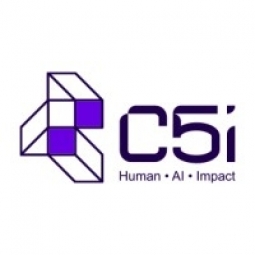公司规模
Large Corporate
地区
- America
国家
- United States
- Worldwide
产品
- Digital Wallets
技术栈
- APIs
- Data Visualization
实施规模
- Enterprise-wide Deployment
影响指标
- Customer Satisfaction
- Brand Awareness
技术
- 应用基础设施与中间件 - API 集成与管理
适用功能
- 销售与市场营销
- 商业运营
用例
- 机器间付款
服务
- 数据科学服务
关于客户
The customer is a leading devices and services company operating in the financial services industry. They were interested in understanding the evolving global digital wallets space and releasing their own digital wallet solution. The company sought to gain effective competitive landscaping and understanding of current prevalent industry business models. They aimed to leverage the insights generated from the research as a key resource in their strategic planning and decision-making processes.
挑战
Blueocean Market Intelligence was tasked with providing a comprehensive market roundup of the top digital wallets available globally and assessing various business models to understand how the market is evolving to include different and innovative payment solutions. The client wanted to understand the current prevalent industry business models and gain strategic competitive insights. The research was to be executed using an all-inclusive secondary/desk research, pulling information from syndicated sources, publicly available information, and other existing research owned and shared by the client.
解决方案
The research was initiated with continual discussions with the client to ascertain the top digital wallets to be studied. Detailed functionalities, workings for P2P (person-to-person) and P2B (person-to-business) payments, revenue model, external support to the wallet (APIs and others), social media integration, and consumer experience were captured for each of the players selected. Periodic improvements to the intermediate drafts were realized through client feedback. Powerful visualization was created to bring the story alive for the client deliverable in a simplified form. The research was spread over a period of two weeks and was structured to be in alignment with the project objectives.
运营影响
数量效益

Case Study missing?
Start adding your own!
Register with your work email and create a new case study profile for your business.
相关案例.

Case Study
Creating an Agile Environment to Drive Growth in the IoT
Numerex needed to provide innovative products and service offerings and adapt to the explosive growth in the IoT/M2M ecosystem. As Numerex was transforming into delivering on-demand offerings to its wide range of markets, they realized their back office systems weren’t capable of providing flexible feature sets, critical to helping turn up new product catalogue configurations to close deals and better manage service offerings. An example of this needed flexibility would allow a Numerex customer to buy devices in bulk yet only pay for those that actively use data on the network. Their systems required significant development efforts to introduce new service offerings such as this. They had segregated billing systems that didn’t scale for high volume processing requirements. Numerex was also growing via M&As, which brought the additional challenges of outdated technologies and a variety of disparate billing systems that didn’t talk to each other, resulting in complex operational expenditures and integration requirements. It became so dire that Numerex was forced to implement manual billing processes for certain lines of business.

Case Study
The Hub of Cloud Communications
SimpleSignal delivers services through multiple channels, whether that’s through wholesale partners or white labeling or directly to an end user. It’s a wide range of products - large scope - and offered both as usage based and subscription based services. The platform of choice had to have the qualities of traditional telecommunications billing but also the innovation, flexibility and scalability of Software-as-a-Service (SaaS) billing.

Case Study
ANZ Bank's Digital Transformation with Nintex Advanced Workflow
ANZ Bank, one of the top 50 banks in the world and the fastest-growing bank in Indonesia, was facing a challenge with its rapidly increasing transaction volume. The bank's existing business processes and workflow were becoming overwhelmed. Like most banks in Indonesia, ANZ was manually handling document submission and verification. Customers filled out paper loan applications and supporting documents, then delivered them to bank branches by mail or courier. Branch officers traveled to the bank’s headquarters or used postal mail, email, and phone calls to submit loan documents for verification. Lost or inaccurate documents created more emails and phone calls. Additionally, ANZ had to adhere to strict verification and financial regulations, including the Foreign Accounts Compliance Act. This act requires that all banks outside the United States provide key information about U.S. clients, including citizenship validation, to the Internal Revenue Service–a complex yet crucial process.

Case Study
Citibanamex's Digital Transformation: A Mobile-First Strategy with OpenLegacy
Citibanamex, a part of Citibank corporation, was facing a challenge in keeping up with the rapidly evolving Mexican consumer banking market. The bank's primary goal was to deliver a seamless, personalized user experience across both digital and traditional channels. The bank's mobile application rating was a mere 2.0 out of 5, indicating a need for innovative digital offerings to improve the user experience. The bank's core technology stack was a proprietary mainframe system, which ran core business applications such as payments and account management. Over time, modernization projects led to an increasing spiral of complexity with various tools, mainframe gateways, ESBs, middleware, dispatchers, routers, and messaging queues. Each system had a different way of handling the backend legacy platform, making it harder and more cumbersome to integrate with legacy applications. After years of unsuccessful, costly integration attempts, Citibanamex was left with the same needs and challenges, only exacerbated. The focus shifted to the Customer Digital Experience and the End-User Journey, and they needed a partner that could help them rapidly develop and deploy innovative customer offerings on top of their core systems.
Case Study
BBVA: Leveraging Geospatial Data for Innovative Customer Services
BBVA, a global banking and financial services group, was faced with the challenge of adapting to the rapidly changing landscape of digital payments. The bank noticed a significant increase in mobile payments, particularly during the COVID-19 pandemic, with the percentage of customers using this method rising from 4.4% to 23%. As part of its digital transformation journey, BBVA aimed to offer its customers an exceptional range of services and a great banking experience. The bank was already using Google Maps Platform to help customers find their nearest branch or ATM locations, but it wanted to further leverage the potential of Google Maps Platform solutions. BBVA's mobile banking app was used by 71% of its customers in Spain, and was accessed more than 120 million times a month. The bank wanted to provide more information about each customer transaction to offer a better financial experience for digital customers.








